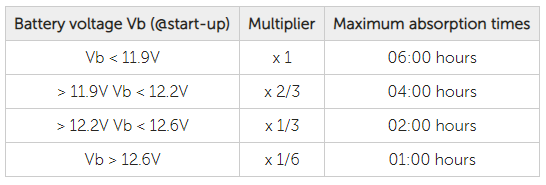Directed to the Victron programmers, I just recently set up the graphical software with the latest update. I was using the factory rotary presets for many months with flawless operation but the charging volts are 28.8v on setting #2 & 29.4v on #3 & my battery maker says the recommended voltage is 29. So I created a user preset for that & now instead of going from bulk to absorption when it hits the 29v, it goes straight into float with a 30 to 50 amp tail current.
I have it set on adaptive & cranked the absorption time up to the max with a 3 amp tail current but nothing makes it work like the rotary presets. To go around this problem, I've had to set the equalization charge to 29v, engage it manually then babysit it until it comes into range of the proper tail current before setting it back to normal which I don't enjoy or often have the time for.
So Victron guys, can you plz do a fix for that so that it goes to absorption when it hits the preset volt threshold & hold it til it reaches the set tail current on a future update? Would be greatly appreciated.

